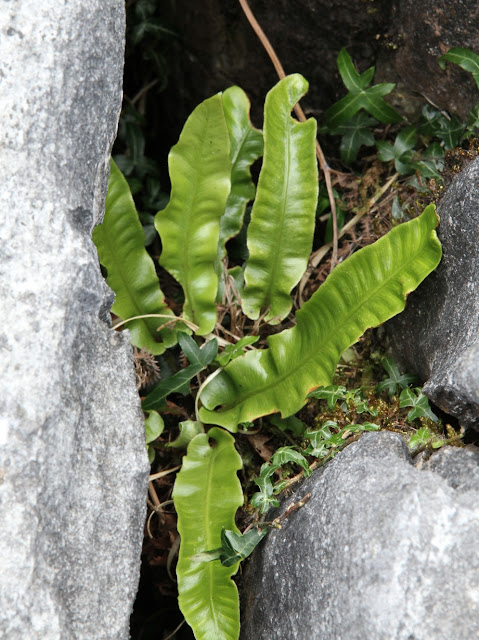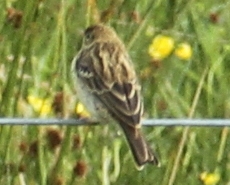On 20th July three members of the group met at the Sligachan Hotel car park to car share down to Camas Malag, just south of Torrin. We managed to get all the way along the dreaded single track road-minus-passing-places without having to reverse all the way back though a large camper van coming in the opposite direction was not so lucky thanks to assertive driving by Phil.
Judy said this was ling, which is apparently an alternative name for common heather (Calluna vulgaris) but I've checked it out as cross-leaved heath (Erica tetralix) which hangs around on wet heaths and moors as well as in bogs. We found it in the heathland/moorland (is there a difference?) that stretches down towards the shore of Loch Slappin.
Out of focus but eyebright all the same (Euphrasia officinalis), traditionally used to treat eye irritation as well as respiratory problems and allergies.
Out of focus again but well identified by Judy as a member of the St. John's Wort (Guttiferae) family. I would tend to go for tutsan (Hypericum androsaemum) because of the reddishness of the stem. When crushed this plant is faintly aromatic, or foetid if it is stinking tutsan (H. hircinum), but we didn't crush it. It probably wasn't perforate St. John's wort as the petals didn't have any black dots, so had we felt in any way depressed with how things were proceeding at that point in time, chewing this plant would not have helped.
This one has also gone onto iSpot. Judy suggested a form of plantain. iSpot suggests sea plantain (Plantago maritima).
Another one for iSpot - seems it is Selfheal (Prunella vulgaris), also known as Heal-All and Heart of the Earth. Apparently it can be used in salads, soups, stews, etc. (all vegan of course!), and as a herbal tea for a wide variety of health problems, including fevers and sore throats.
English stonecrop (Sedum anglicum)
Blabheinn (pronounced Blaven) (928 metres)
Looking north north west to Beinn Dearg (709 metres) (left) and Beinn Dearg Beag (582 metres) (right).
Hart's tongue fern (Asplenium scolopendrium) - identified by Judy.
Down in Dingly Dell, time doesn't exist.
Identified in iSpot as Spiraled wrack (Fucus spiralis). It looks quite tasty and obscenely nutritious; must try it in a stir fry with plenty of chilli and garlic. It costs £3.50 per 100 g (5 servings) online so it will be worth taking a plastic bag on the next U3A nature happenings at Loch Bharcasaig and Tokavaig.
Sea anemone
Rocks coloured beige by billions of barnacles.
Blackpool Beach without the saucy postcards.


















































